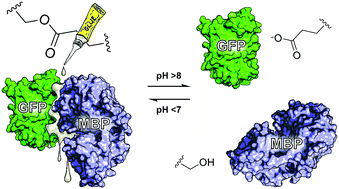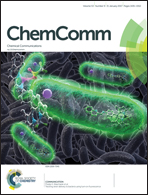Harnessing ester bond chemistry for protein ligation†
Abstract
The hydrolysis potential of ester bonds in covalently cross-linking proteins is captured in our novel protein ligation technology. This new type of “molecular superglue” based on the spontaneously-formed Thr–Gln ester bonds found in cell-surface adhesins, affords a unique mechanism to both rationally assemble and disassemble complex protein nanomaterials.



 Please wait while we load your content...
Please wait while we load your content...